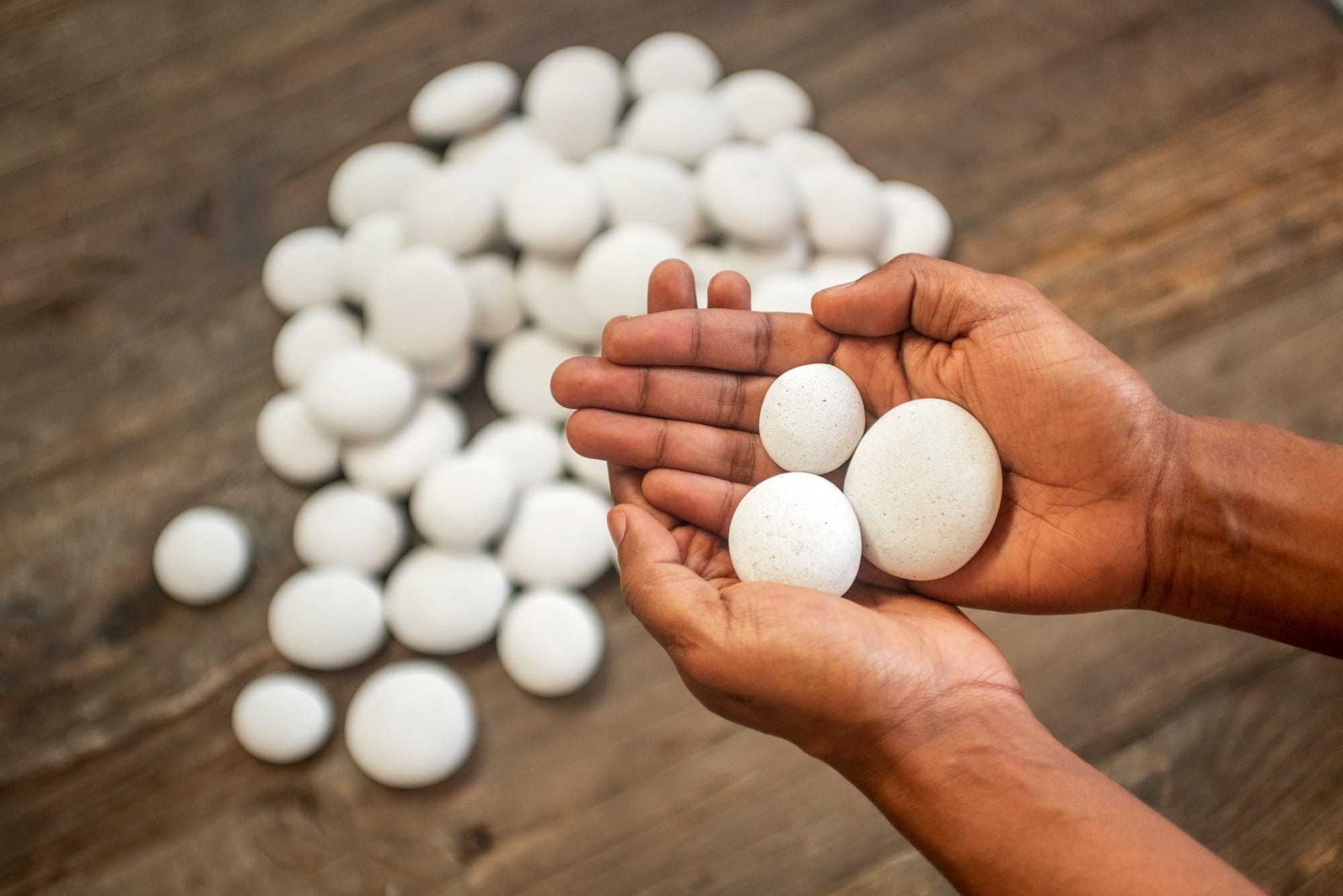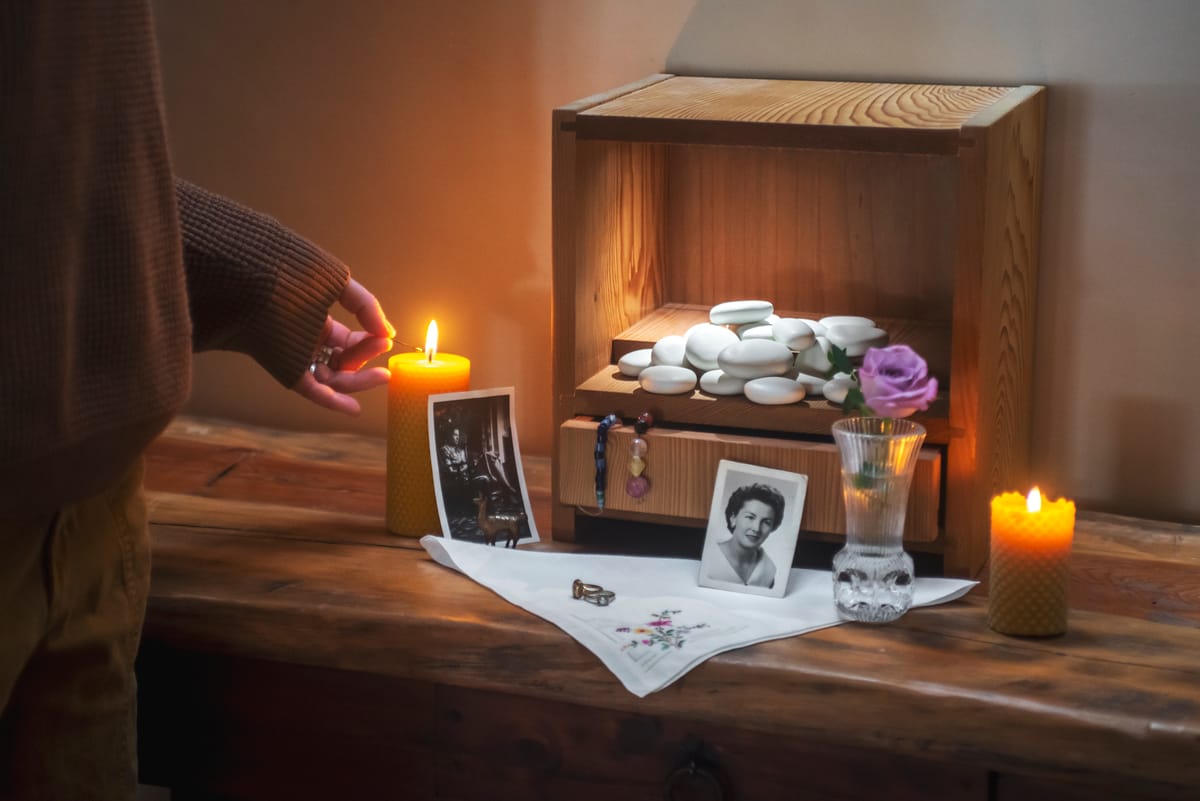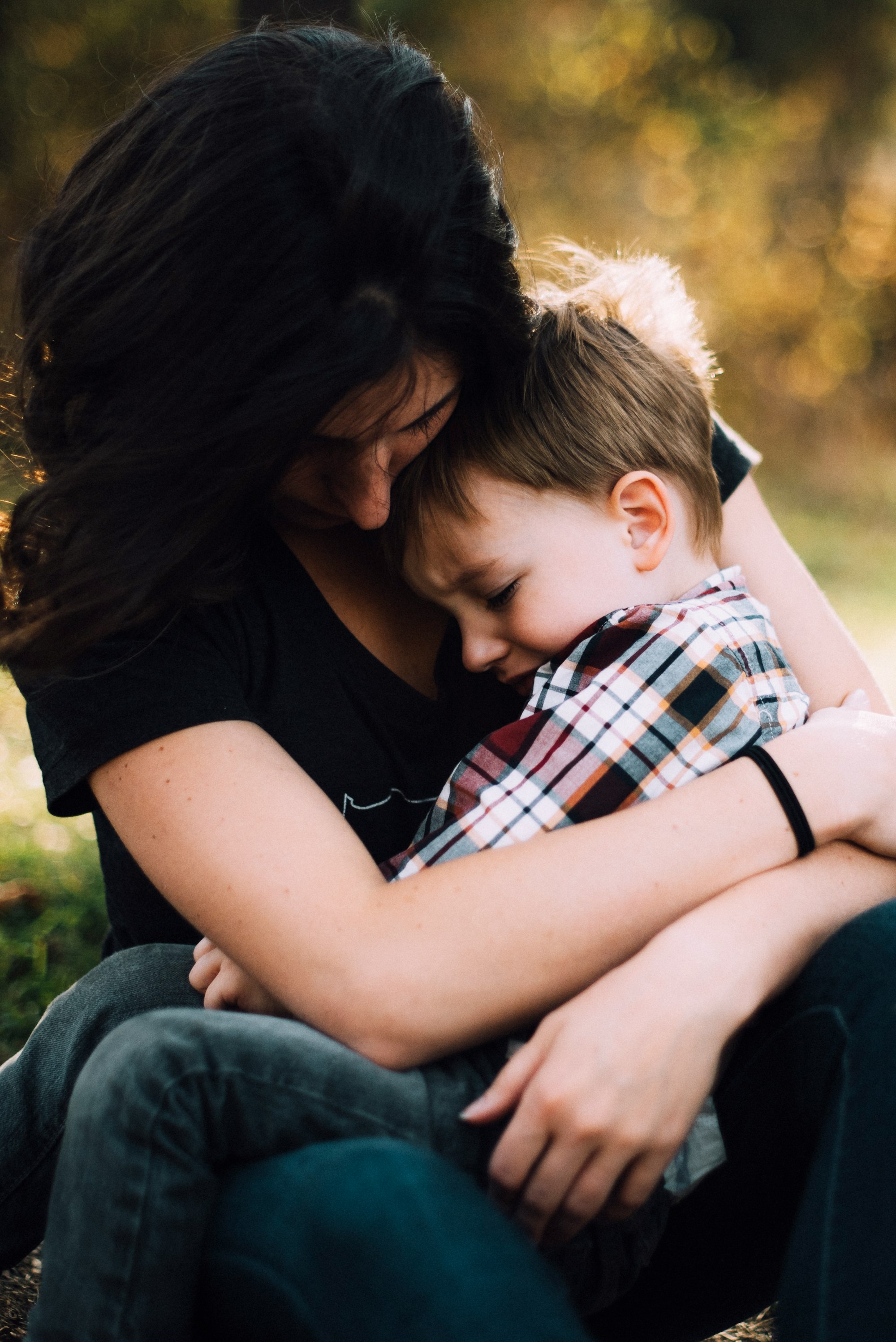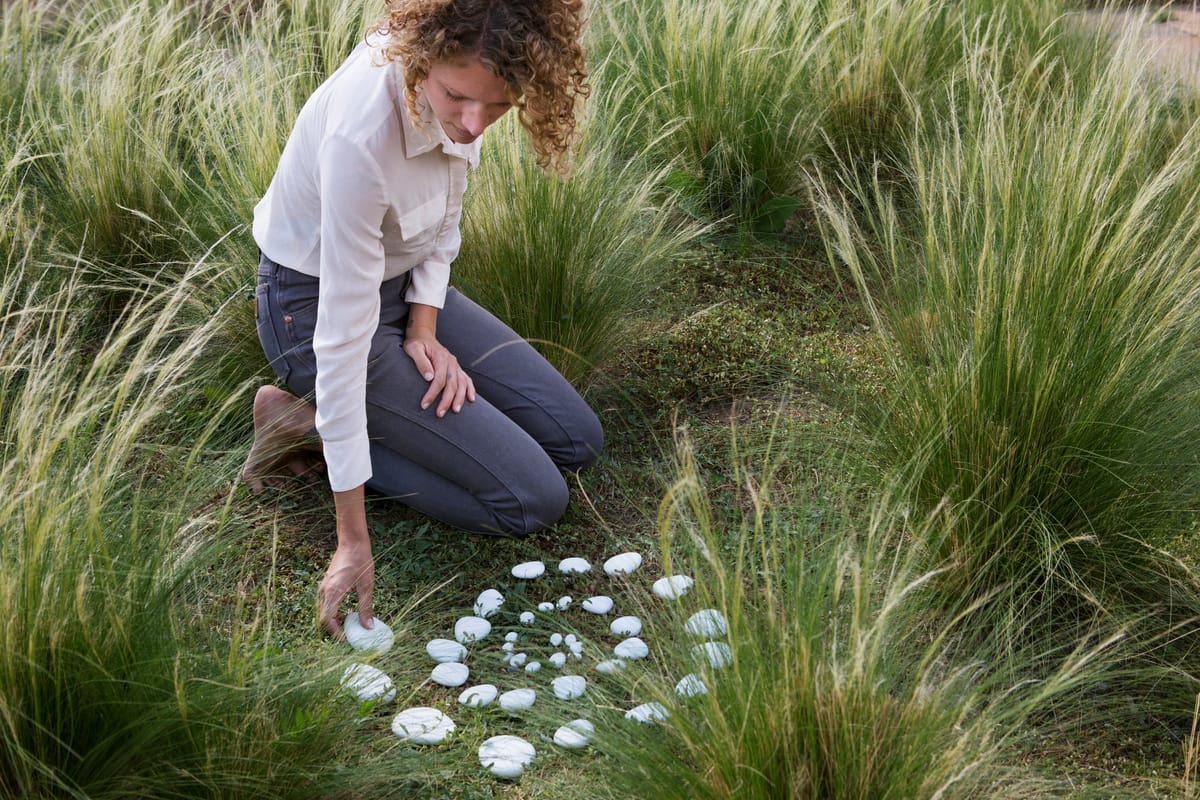Memorial Personalization Options: Creating Meaningful Tributes That Honor Individual Lives
Explore memorial personalization options for unique tributes. Discover ways to customize memorials reflecting individual personality and preferences.

Key Takeaways
- Memorial personalization transforms traditional tributes into deeply personal expressions that reflect someone's unique identity, values, and life story
- Personalization options span five main categories: physical memorials, service customization, digital tributes, living memorials, and experiential options
- The desire to personalize memorials connects to continuing bonds theory, where maintaining meaningful connections supports healthy grief journeys
- Solidified remains offer inherent personalization through natural uniqueness, with each person's 40-80+ stones varying in size, shape, and color
- Effective personalization decisions emerge from exploring what feels authentic rather than following prescribed expectations
Reflections on love, loss and the ways we carry them.
In my work with grieving families, I’ve learned that the desire to personalize a memorial isn’t about ornamentation, it’s about love seeking shape. When someone dies, we look for ways to honor who they truly were, not in the generic sense, but in that deeply specific way only those who loved them would understand. Yet during grief, when the heart is foggy and the world feels unreal, the sheer number of choices can feel overwhelming.
Memorial personalization helps anchor us. Research on continuing bonds reminds us that we don’t “move on” from the people we love—we integrate them into the lives we continue to live. A personalized memorial becomes a touchpoint, a way of saying, “Your story still matters here.”
I think of Marissa, who lost her husband of 32 years. “I didn’t want an urn,” she told me. “It felt too final.” When she received his Parting Stone collection—smooth, natural stones unique to his own body, she found herself instinctively holding one during her morning coffee. Later, she shared stones with her children, each choosing one that “felt like Dad.” One stone now travels in her daughter’s backpack; another sits on a son’s work desk. “It made him feel present,” Marissa said. “Not gone, just carried differently.”
Whether your tribute is elaborate or simple, traditional or inventive, what matters is that it reflects the truth of your relationship. Personalization isn’t about doing grief “right.” It’s about finding what brings comfort, connection, and meaning—one choice, one ritual, one small stone at a time.
Cathy Sanchez Babao
Parting Stone Grief Coach
The desire to honor someone's unique essence is deeply human. When someone you care about dies, the impulse to create something that captures who they truly were goes beyond tradition. It becomes about preserving their individuality in tangible ways that feel true to their spirit. Yet navigating memorial personalization options during grief can feel overwhelming, with countless choices appearing when clarity feels scarce.
This guide explores the landscape of memorial personalization options available today, from time-honored traditions to contemporary innovations. Whether you're planning immediately after a loss or revisiting memorial choices years later, understanding your options can help you create tributes that genuinely reflect the person you're honoring.

A New Way to Hold Close What Matters Most
We transform cremated remains into beautiful, touchable stones that bring comfort when you need it. Something you can hold, share, and keep close.
Understanding Meaningful Memorial Personalization
Memorial personalization means shaping tributes to reflect an individual's authentic life rather than following generic formats. It transforms memorials from standardized ceremonies and objects into expressions of specific personalities, values, relationships, and legacies.
How Can You Personalize Memorial Services and Products?
You can personalize memorial services and products through five primary approaches: customizing physical memorial items with meaningful elements like engravings or photos, tailoring service ceremonies with chosen music and readings, creating digital tributes through online memorials, establishing living memorials like memorial gardens, and planning experiential tributes such as celebration events. Each approach offers multiple options for reflecting individual personality and preferences.
The psychological foundation for personalization connects to continuing bonds theory, research showing that maintaining meaningful connections with people who have died supports many people's grief journeys (Klass, Silverman, & Nickman, 1996). When you personalize a memorial, you're not trying to recreate someone's presence. You're creating touchpoints that acknowledge their ongoing significance in your life.
Dr. Robert Neimeyer, a leading grief researcher, emphasizes that meaning-making activities, including memorial personalization, can provide frameworks for integrating loss into changed life narratives (Neimeyer, 2001). Personalization becomes less about performing grief "correctly" and more about expressing what matters to you about this specific relationship.
Some families find extensive customization meaningful. Others prefer simplicity. Both approaches honor loss authentically when they align with your needs and the person you're remembering.
Physical Memorial Personalization Options
Physical memorials create tangible connection points, objects you can see, touch, and encounter in daily life. These range from traditional choices adapted with personal details to entirely new forms of memorialization.
Cremation Urns and Containers
Beyond standard urns, personalization options now include photo-ceramic urns incorporating actual photographs, custom-shaped vessels reflecting hobbies (guitars, golf bags, motorcycles), hand-painted designs, and engravings featuring handwriting from birthday cards or meaningful quotes. Some families commission artists to create completely custom ceramic or glass pieces.
Sarah Wehnau from Moriah, New York 🖤, shared how personalization aligned with her husband's personality: "I was having difficulty deciding on an urn. Parting Stones also made it easier to share my husband's remains with our large, close-knit family. He was an avid rock collector as well, so everything about this made sense and has given me peace."

Memorial Jewelry and Wearable Items
Contemporary options extend well beyond basic locket necklaces. Fingerprint jewelry captures actual fingerprints in silver or gold. Glass artists incorporate small amounts of cremated remains into blown glass pendants or beads. Custom pieces can include birthstones, coordinates of meaningful locations, or audio wave engravings of someone's voice saying "I love you."
Memorial Art and Display Options
Families increasingly commission artists to create memorial pieces integrated into daily living spaces. Options include portrait paintings, custom sculptures, memorial quilts incorporating clothing, and photography collections arranged as gallery walls. Some families create memory boxes with carefully curated objects rather than single display items.
Dee Tibbetts from Lynn, Massachusetts 🖤, found creative ways to personalize her display: "I have painted (with nail polish and it doesn't seem to affect the composition of the stone) and decorated with decals to personalize each stone. One goes with me everywhere I go, especially when I've been hospitalized. So my husband is always with me. I have received many compliments on them."

Alternative Physical Memorials
Innovation continues expanding possibilities. Vinyl records pressed with cremated remains, memorial tattoos using cremation ink, diamonds created from carbon in cremated remains, and reef balls for ocean memorialization represent growing alternatives (National Funeral Directors Association, 2023).
@chloebluffcakes Thank you @partingstone 🤍 youve given me an unimaginable gift. One day I will share these with my little sister and carry her wherever we go in life together. #grief #partingstone #loss
♬ Repeat Until Death - Novo Amor
Service and Ceremony Customization
Memorial services themselves offer extensive personalization possibilities, moving beyond traditional funeral formats to celebrations reflecting individual lives.
Music and Sound Choices
Rather than standard hymns, families now incorporate favorite songs, live performances by musician friends, or audio recordings of the person's voice or laughter. Some services include instruments the deceased played or music from significant life periods.
Readings and Spoken Elements
Personalization here ranges from selecting meaningful poetry or literary passages to creating entirely custom readings. Eulogies can become collaborative, with multiple speakers sharing specific stories. Some families invite attendees to participate with open-mic sharing.
Visual Elements
Memorial service visuals might include photo montages, video tributes, displaying meaningful objects (tools, sports equipment, artwork), or creating interactive memory boards where attendees add notes and memories.
Location and Setting
Services need not occur in funeral homes or religious spaces. Families hold memorials in favorite parks, beaches, restaurants, theaters, or homes. Location choices can profoundly impact the memorial's feeling and meaning.
Anne Pappas from Brunswick, Maine 🖤, described a perfectly personalized display: "I memorialized John by keeping his stones in a glass dish with his favorite captain, Captain Kirk of the USS Enterprise stating, 'To boldly go where no man has gone before.' I'm pretty sure John approves."

Digital and Modern Memorial Options
Technology has expanded memorial personalization into digital spaces, creating new ways to share memories and maintain connections.
Online Memorial Pages
Dedicated websites allow families to share photos, videos, stories, and memories. Unlike social media posts that disappear in feeds, these permanent spaces become gathering places for extended networks. Some platforms offer interactive features where visitors contribute their own memories.
QR Code Memorials
QR codes on headstones or memorial plaques link to online content: videos, photo galleries, life stories, or family trees. This bridges physical and digital memorialization, allowing brief cemetery visits to connect to extensive life documentation.
Social Media Memorialization
Platforms now offer memorialization settings for accounts of people who have died. These transform profiles into memorial spaces while preventing unauthorized access. Some families create dedicated memorial accounts for sharing memories and maintaining community.
Video Tributes and Documentaries
Professional or family-created videos preserve voices, mannerisms, and stories. Some families conduct interview-style recordings with multiple people sharing memories, creating documentary-style tributes.
@ohthatjenny If you would like more information on Parting Stone and the process please dont hesitate to ask. I feel so confident that Chris would love this way of keeping his memory alive. He is SO missed and loved still and always. #partingstone #partingstones #lifeafterloss #griefandloss @PartingStone
♬ original sound - Jenny
Living Memorial Options
Living memorials create ongoing legacies through growth, giving, or environmental contributions.
Memorial Gardens and Trees
Planting trees or creating garden spaces provides living tributes that change with seasons. Memorial tree programs through organizations like The Living Urn allow planting cremated remains with trees. Some families create entire garden spaces with plants reflecting favorite colors or meaningful symbolism.
Cathy Winkler from Lone Jack, Missouri 🖤, found comfort in her outdoor memorial: "It's very nice to look outside under the memorial tree I planted and see both my mom and dad's stones that you did for us. Comforting to have them close. We created a loving memorial out in our back yard with a tree and the stones. It's very comforting to look outside under my window and see them."
Charitable Giving and Scholarships
Memorial funds, scholarships, or ongoing charitable donations extend someone's values and passions into the future. These might support causes they cared about, fund education in fields they valued, or address needs they recognized.
Conservation and Environmental Memorials
Options include adopting wildlife in someone's name, sponsoring conservation land, supporting marine sanctuaries, or contributing to environmental restoration projects. These appeal particularly when someone valued nature or environmental protection.

Experiential Memorial Personalization
Some families create memorial experiences rather than objects, events, or activities that honor someone's memory through meaningful participation.
Celebration of Life Events
Moving beyond traditional services, celebration events might include favorite activities: memorial golf tournaments, art shows, concerts, potluck dinners featuring someone's favorite recipes, or gatherings at beloved locations. These events can become annual traditions.
Memorial Trips and Pilgrimages
Traveling to significant locations (places someone loved, dream destinations they never reached, or settings tied to heritage) creates memorial experiences. Some families scatter portions of cremated remains during these journeys.
Sheila Grimmer 🖤 shared how travel became part of her personalization: "I have given stones to our kids, grandkids, family and friends. We have left a stone in special locations (Maine, Florida, Iceland) that Kevin loved or would have loved. Holding the stone allows me to feel connected to him."
Mike Owen from Gilbert, Arizona 🖤, described similar meaningful experiences: "I'm able to take her to beautiful places. What an amazing way to honor someone you loved. They can be passed to family members. They can be left in memorial places. Just fantastic."
Ongoing Traditions and Rituals
Families establish continuing practices: annual memorial hikes, birthday tradition dinners, holiday remembrances incorporating favorite customs, or service projects on death anniversaries. These create regular touchpoints for remembering.
Chris's son died before he got to embark on the cross-country train trip that he had planned. Learn how solidified remains are helping him go on the journey he never got to take.
Making Personalization Decisions That Feel Authentic
With so many memorial personalization options available, how do you choose what feels right? Several frameworks can guide decision-making without prescribing specific choices.
Questions to Consider
Rather than "what should I do," consider exploring: What aspects of this person's identity feel most essential to preserve? What would they have appreciated or found meaningful? What provides comfort specifically to you and your family? What feels sustainable long-term versus what addresses immediate needs? What honors both individual personality and shared relationships?
These questions have no universal answers. Your responses guide personalization that reflects your specific situation.
Permission for Your Own Path
Personalization choices need not be permanent or comprehensive. You might start with small memorial elements and expand later. You might choose extensive customization immediately. You might prefer minimal personalization. All these approaches can feel authentic when they align with your needs.
Some people find comfort in traditional formats with subtle personal touches. Others need complete customization to feel the memorial truly represents someone. Neither approach is more "correct." Your grief journey and relationship inform what serves you.
Lori Bailey Cunningham from Cane Ridge, Tennessee 🖤, explained how she chose what fit: "A traditional urn and ashes approach to memorializing my mother just didn't fit with who she was. She was a unique, creative artist who always appreciated the unconventional. It was fun to know that we were going to have her physical remains stay in our lives in a unique way."
Evolving Memorial Choices
Personalization isn't necessarily a one-time decision. As your relationship with grief changes, memorial needs may shift. You might add elements years later. You might simplify what initially felt necessary. Revisiting and adjusting memorial expressions over time reflects natural evolution in living with loss.

Solidified Remains: Inherent Personalization Through Science
Beyond personalizing memorial products, some families seek alternatives to traditional cremated remains themselves. Solidified remains represent a complete departure from conventional cremation, transforming cremated remains into 40-80+ solid, stone-like forms through a scientific process validated by the Los Alamos National Laboratory.
Each person's solidified remains are naturally unique. The stones vary in size, shape, and color based on individual body composition and bone structure. This creates inherent personalization: no two collections are identical, just as no two people are identical. Families describe this natural variation as reflecting individuality at a fundamental level.
Lee Van Lith from Minneapolis, Minnesota 🖤, described the deeply personal connection: "When my mom was cremated I felt so disconnected from this cardboard box that contained her ashes. My family and I knew that we didn't want her in an urn and moreover we wanted to be able to have her with all of us, to keep that feeling of her being with us even though she isn't in her physical form anymore."
The tangible, touchable nature of solidified remains allows different types of display personalization than traditional cremated remains. Families arrange stones in custom shadow boxes, glass vessels, or decorative bowls. Some keep stones in multiple locations (homes, offices, cars) or share stones among family members, creating distributed memorials impossible with traditional urns.
Barbara Walker from Allen, Texas 🖤, explained her approach: "Not long before my soulmate became ill, I had discovered Parting Stone through a published story. We both decided that would be something we'd like to do. Now it is comforting to have these beautiful mementos of him that I can display, touch, kiss and pass down to our daughter."
The service costs $2,495 for human remains solidification and includes return of all stones in a handcrafted wooden presentation box. This approach appeals to families seeking both scientific innovation and inherent personalization without requiring additional customization decisions during early grief.
Display flexibility becomes another form of personalization. Families change arrangements seasonally, incorporate stones into existing home decor, or create traveling memorials. The stones' durability allows handling, carrying, and integration into daily life in ways traditional cremated remains often don't permit.
Todd Guinn from Gilbert, Arizona 🖤, shared how his family personalized their stones: "I also found it nice when I visit a place or spot that we both enjoyed I leave a small stone in a place that blends in with the surroundings so a piece of him will be there forever. Lastly it been a joy to share them with family and his nieces and nephews have taken their stones and painted and decorated them appropriately. Everyone says that from time to time they find themselves talking to their stone as if he were there and it gives them great pleasure."

Conclusion
Memorial personalization options span from subtle customization of traditional formats to entirely reimagined approaches to honoring individual lives. What makes personalization meaningful isn't the extent of customization or cost of choices. It's the alignment between memorial expressions and what feels true (to the person being remembered, to your relationship, and to your own needs as you navigate grief).
The landscape of memorial options continues expanding, offering increasing flexibility for families to honor loss in personally resonant ways. Whether you choose extensive personalization across multiple categories, focus on single meaningful elements, or prefer simplicity with carefully selected touches, your choices create frameworks for maintaining connection and expressing what matters.
Personalization remains an ongoing possibility rather than a single decision point. As you move through your grief journey, memorial expressions can evolve, reflecting changing needs and developing relationships with loss. The goal isn't perfection or performance. It's creating touchpoints that support your specific path through living with loss, honoring both the person who died and the life you continue building.
Mary Kelly from Prescott, Arizona 🖤, beautifully captured the essence of personalized memorialization: "Parting Stones allow us to remember our loved one daily as we live our ordinary lives. I carry one in my pocket, there's one on the dashboard of the truck, and always one in my travel luggage. Family members and friends eagerly accept stones, some to keep, and some to place at spots they shared with the departed."
Comparison: Memorial Personalization Approaches
| Personalization Type | Timeline | Cost Range | Best For |
|---|---|---|---|
| Physical Memorials | Immediate to ongoing | $50-$10,000+ | Families wanting tangible connection points in daily spaces |
| Service Customization | Immediate (within days/weeks) | $0-$5,000+ | Creating meaningful ceremony experiences that reflect personality |
| Digital Tributes | Immediate to ongoing | $0-$500/year | Extended networks seeking accessible shared memorial spaces |
| Living Memorials | Ongoing (months to years) | $25-$5,000+ | Those wanting growth-based or legacy-focused tributes |
| Experiential Options | Ongoing (can begin immediately) | $0-$10,000+ | Families valuing activities and experiences over objects |
Frequently Asked Questions
How much does memorial personalization typically cost?
Memorial personalization costs vary dramatically based on choices, ranging from minimal expense for DIY options like creating photo displays or playlists to thousands of dollars for custom artwork, jewelry, or specialized services. Simple personalizations like custom engravings on urns might add $50-200, while commissioned memorial portraits could cost $500-5,000+. Digital memorials often offer free basic options with premium features available. Setting a budget before exploring options helps narrow choices to realistic possibilities for your situation.
Can you personalize memorial services for any religion or cultural tradition?
Most religious and cultural traditions accommodate some level of personalization while maintaining core ceremonial elements. The key is understanding which aspects of tradition feel essential to honor and where flexibility exists. Consulting with religious leaders or cultural advisors before planning helps identify appropriate personalization opportunities. Many traditions have evolved to incorporate contemporary personalization while preserving sacred components. Families often blend traditional religious elements with personal touches like specific music, readings, or visual displays.
What are the most meaningful ways to personalize a memorial on a limited budget?
Budget-friendly meaningful personalization includes creating photo collages using existing pictures, compiling playlists of significant music, writing custom readings or poems, organizing memory-sharing opportunities during services, planting memorial trees or gardens using cuttings from meaningful plants, creating memory books where attendees write stories, displaying meaningful objects you already have, and choosing locations with personal significance rather than traditional venues. Authenticity and thoughtfulness matter far more than expense in memorial personalization.
How do you choose between traditional and non-traditional memorial options?
Choosing between traditional and non-traditional options involves considering several factors: your comfort level with various approaches, what would have resonated with the person who died, your family's and community's expectations, what provides meaningful comfort to you specifically, and practical considerations like cost and logistics. Some families blend traditional frameworks with non-traditional personalization elements. Others feel non-traditional approaches better honor specific individuals. Neither choice is inherently better (effectiveness depends on alignment with your specific situation and needs).
When is the right time to make memorial personalization decisions?
Memorial personalization timing varies significantly by person and situation. Some decisions require immediate attention due to service scheduling, while others can unfold over months or years. Immediate grief often makes complex decisions difficult, so prioritizing only necessary choices initially often works well. Many personalization options (memorial jewelry, art commissions, ongoing traditions, digital tributes) can be implemented long after services conclude. Giving yourself permission to make decisions at your own pace, revisit choices, and add memorial elements gradually reduces overwhelm during early grief while keeping meaningful personalization possible.
How can you share memorial items among family members who live far apart?
Sharing memorial items across distances has become increasingly feasible through several approaches. Solidified remains naturally allow distribution among family members, with each person receiving stones they can display or carry. Digital memorial platforms enable virtual sharing of photos, videos, and memories accessible from anywhere. Some families create duplicate memorial items (multiple photo albums, jewelry pieces with small amounts of cremated remains, or printed memorial materials). Coordinating memorial events during family gatherings allows participation in personalization rituals together. Technology like video calls can include distant family members in memorial planning discussions and ceremonies.
References
Klass, D., Silverman, P. R., & Nickman, S. L. (1996). Continuing bonds: New understandings of grief. Taylor & Francis. https://www.routledge.com/Continuing-Bonds-New-Understandings-of-Grief/Klass-Silverman-Nickman/p/book/9781560326885
National Funeral Directors Association. (2023). 2023 NFDA Cremation and Burial Report. https://nfda.org/news/statistics
Neimeyer, R. A. (2001). Meaning reconstruction and the experience of loss. American Psychological Association. https://psycnet.apa.org/record/2001-01609-000
Psychology Today. (2022). The importance of personalizing grief rituals. https://www.psychologytoday.com/us/therapists
The Conversation. (2019). Why creating rituals around grief helps us cope with loss. https://theconversation.com/
What's Your Grief. (2024). Continuing bonds in grief: Maintaining connection after loss. https://whatsyourgrief.com/
Funeral Consumers Alliance. (2024). Planning a personalized memorial service. https://funerals.org/








